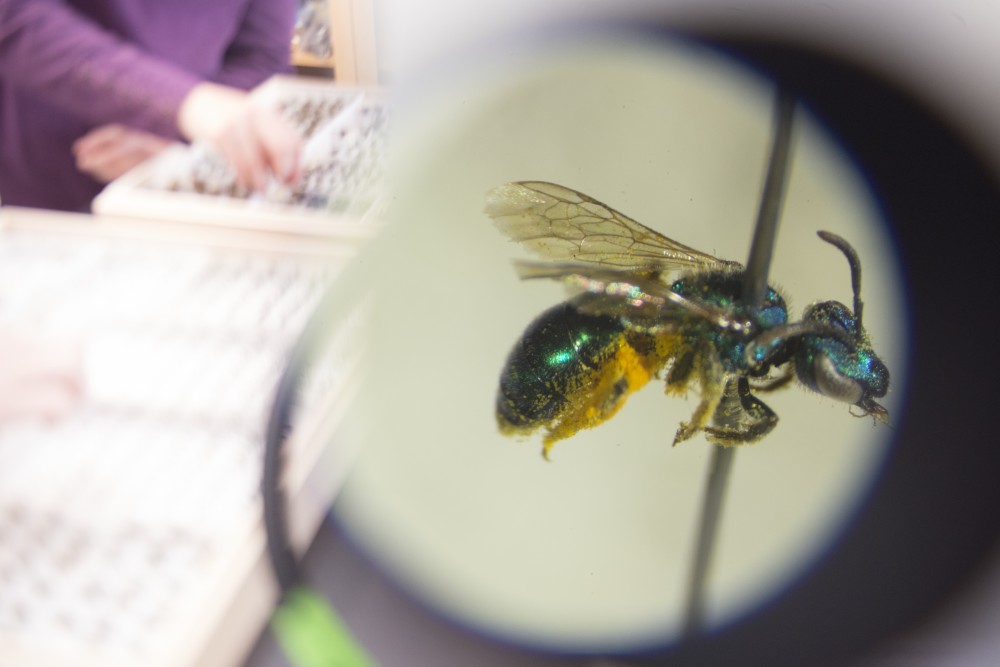A new University of Minnesota study will aim to understand what habitats are best for bees by leasing and planting land plots this summer.
Researchers are now reviewing landowner applications as part of the five-year study, which received a $1 million grant from the United States Department of Agriculture and $1 million from the Minnesota Legislature.
The study will span six to 10 counties in southwest Minnesota, said researcher Christina Herron-Sweet. The team is sorting through about 150 applications from landowners who want to participate to decide where they will plant the habitats.
The study will run in as many as 40 different sites, one to 15 acres each, said University Bee Lab entomologist Marla Spivak.

In deciding where to plant the habitats, the team is considering plot size, land accessibility and the shape of the lot, Herron-Sweet said.
“Through this study, we will find out how to put in pollinator habitats for both native and honey bees for the least amount of cost,” she said.
The project will also study ideal plot size, impact of surrounding landscapes and seed mix efficacy, among other topics, said lead researcher Dan Cariveau.
Researchers will plant several pollinator habitats and experiment with two different types of seed mixes to attract the bees. One seed mix will be targeted toward native bees, such as bumble bees, and contain a range of flower species. The second mix will aim to attract honeybees and won’t be as diverse, Herron-Sweet said.
Seed mixes can be very expensive, so the researchers hope to better understand the cost and benefit of each seed mix type.
“We will also do an economic analysis of the costs of the seed mixes, planting and rent to understand the benefit that we are actually getting,” Cariveau said.

Cariveau stressed that since the researchers will plant the habitats themselves, they’ll have more control over the environments and better understanding of which factors lead to results. In many other studies, state or federal agencies are responsible for planting, which makes it difficult for researchers to analyze cause and effect, he said.
“We hope to minimize as much variability as we can,” Cariveau said.
The study will benefit declining bee populations and boost their health by providing the bees with food, which will allow them to be effective pollinators.
The study may also help researchers understand how plantings influence the predators of crop pests.
“Soybean aphids are a crop pest that eat the soybean plant and make it have a lower yield. There are other insects that kill soybean aphids, and it is possible that the pollinator plantings might be good habitat for those insect predators,” Herron-Sweet said.







